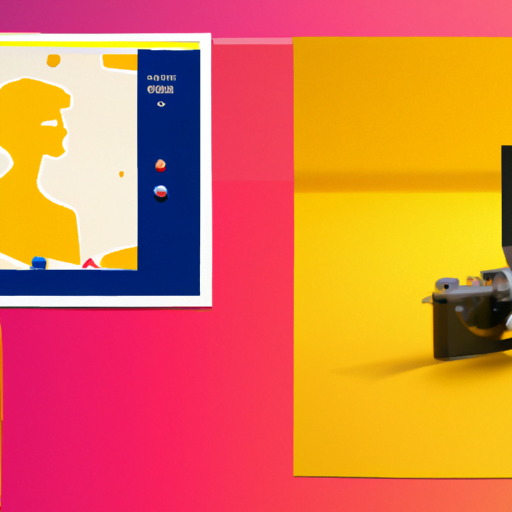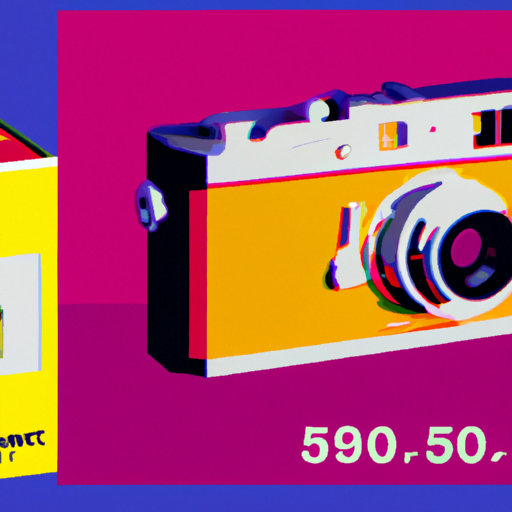
-
Table of Contents
- Interactive Product Visualization: Enhancing User Experience
- What is Interactive Product Visualization?
- The Benefits of Interactive Product Visualization
- Case Studies: Successful Implementation of Interactive Product Visualization
- 1. IKEA
- 2. Nike
- 3. Houzz
- Statistics: The Impact of Interactive Product Visualization
- Conclusion
Interactive Product Visualization: Enhancing User Experience

When it comes to online shopping, one of the biggest challenges for consumers is the inability to physically interact with products before making a purchase. This limitation often leads to uncertainty and hesitation, resulting in lower conversion rates for e-commerce businesses. However, with the advent of interactive product visualization, companies now have the opportunity to bridge this gap and provide a more immersive and engaging user experience. In this article, we will explore the concept of interactive product visualization, its benefits, and how it can enhance the overall user experience.
What is Interactive Product Visualization?
Interactive product visualization refers to the use of technology to create virtual representations of products that users can interact with in real-time. It allows customers to explore and examine products from different angles, zoom in on specific details, and even customize certain aspects to match their preferences. This technology leverages various tools such as 3D modeling, augmented reality (AR), and virtual reality (VR) to provide a more realistic and immersive experience.
The Benefits of Interactive Product Visualization
1. Improved Product Understanding:
- Interactive product visualization enables customers to gain a better understanding of the product’s features, dimensions, and functionality. By allowing users to interact with the product virtually, they can explore its various aspects and make more informed purchase decisions.
2. Increased Engagement:
- By providing an interactive experience, businesses can capture the attention of their customers and keep them engaged for longer periods. This increased engagement can lead to higher conversion rates and customer satisfaction.
3. Personalization:
- Interactive product visualization allows customers to personalize certain aspects of the product, such as color, size, or material. This customization feature enhances the user experience by giving customers a sense of ownership and control over their purchase.
4. Reduced Returns:
- One of the major challenges for e-commerce businesses is the high rate of product returns. Interactive product visualization can help mitigate this issue by providing customers with a more accurate representation of the product. By allowing users to interact with the product virtually, they can get a better sense of its size, shape, and overall appearance, reducing the likelihood of returns due to mismatched expectations.
Case Studies: Successful Implementation of Interactive Product Visualization
Several companies have successfully implemented interactive product visualization to enhance their user experience and drive sales. Let’s take a look at a few notable examples:
1. IKEA
IKEA, the Swedish furniture retailer, has integrated augmented reality (AR) into its mobile app to allow customers to virtually place furniture in their homes. By leveraging the camera on their smartphones, users can select furniture from the IKEA catalog and see how it would look in their own space. This interactive visualization feature has not only increased customer engagement but also reduced the uncertainty associated with purchasing furniture online.
2. Nike
Nike, the global sportswear brand, has embraced interactive product visualization through its Nike By You platform. This platform allows customers to customize and personalize their sneakers by selecting different colors, materials, and designs. By providing an interactive and immersive experience, Nike has not only increased customer engagement but also created a sense of exclusivity and uniqueness for its customers.
3. Houzz
Houzz, an online platform for home remodeling and design, has integrated interactive product visualization into its app to help users visualize their home improvement projects. Users can browse through a vast catalog of furniture, fixtures, and decor items, and virtually place them in their own spaces using augmented reality (AR). This feature has revolutionized the way users plan and execute their home improvement projects, leading to increased customer satisfaction and reduced returns.
Statistics: The Impact of Interactive Product Visualization
Let’s take a look at some statistics that highlight the impact of interactive product visualization:
- According to a study by Shopify, 3D and AR product visualization can increase conversion rates by up to 250%.
- A survey conducted by Retail Perceptions found that 40% of consumers would be willing to pay more for a product if they could experience it through augmented reality (AR).
- In a study by Deloitte, 71% of consumers stated that they would shop at a retailer more often if they offered augmented reality (AR) experiences.
Conclusion
Interactive product visualization has emerged as a powerful tool for enhancing the user experience in the e-commerce industry. By allowing customers to virtually interact with products, businesses can improve product understanding, increase engagement, enable personalization, and reduce returns. Successful implementation of interactive product visualization by companies like IKEA, Nike, and Houzz has demonstrated its effectiveness in driving sales and customer satisfaction. As technology continues to advance, interactive product visualization is likely to become an essential component of the online shopping experience, revolutionizing the way customers interact with products and make purchase decisions.
